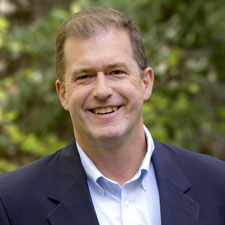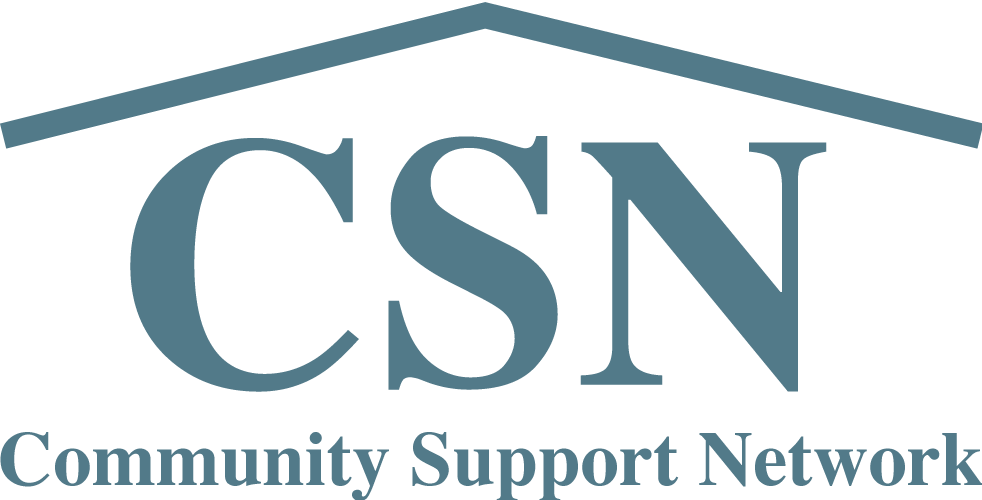CSN Executive Director Tom Bieri receives regional leadership award
Tom Bieri of Community Support Network wins Nonprofit Leadership Award
Article reposted with permission from North Bay Business Journal.
 Describe your organization.
Describe your organization.
For more than four decades, Community Support Network (CSN) has delivered innovative and supportive housing programs for homeless transitional age youth (ages 18-24) and adults who struggle with behavioral health challenges in Sonoma County. At our homes, clients learn independent living skills, positive coping skills, engage in vocational planning, and become self-sufficient. Utilizing a strength-based, client-centered approach, CSN has built a reputation of providing high-quality trauma and addiction recovery services in Sonoma County. The Agency’s supportive housing programs have achieved documented success with clients, using proven, evidence-based programs that are thoughtfully designed and cost-effective. We operate nine homes in residential neighborhoods, providing supportive housing services to nearly 200 clients annually. Our mission is to help individuals with behavioral health challenges realize their potential by providing hope, wellness, and high quality supportive housing.
Tell us a little bit about yourself.
I started off in this field as a Marriage and Family Therapist Intern with Social Advocates for Youth working out of Healdsburg. It gave my life meaning at the time to help youth find their authentic voice and learn to gain mastery over their issues and symptoms. Eventually, I began to gain the same level of meaning that I used to get from directly helping youth by engaging in the creative process of program building. Serving first as the Executive Director of SAY and then in my current role as the Executive Director of Community Support Network has provided me the opportunity to lead a variety of dynamic teams in the process of building important new programs.
This past year, I had the privilege of leading the Best Practices and Integrated Health Subcommittee of the Continuum of Care on Homelessness in bringing together a collaborative effort to share three exciting evidence-based practices with all providers all over the county. We expect that 7,000 individuals will be served with Seeking Safety, Motivational Interviewing, and Question, Persuade, Refer.
Most recently, I have had the pleasure of co-facilitating Seeking Safety groups with Foster TAY at Community Support Network’s Sanctuary House. It fills my heart with joy to be able to share positive coping skills with youth who have experienced trauma in their lives. It is very gratifying to see 93% of the youth at Sanctuary House maintaining housing and making gains in the areas of income, education, and career development.
What is your role in the organization?
Executive Director
What achievement are you most proud of?
Opening the doors of Sanctuary House, CSN’s home for transitional age youth. Sanctuary House is a model program that began in 2013 to serve Sonoma County’s vulnerable population of youth (18-24 years) who have a history of foster care and/or trauma. To design and implement this program, and then to watch the youth at Sanctuary House not only recover, but genuinely flourish, at Sanctuary House over the years is an achievement for me both personally and professionally. I owe a debt of thanks to the talented Sanctuary House Coordinator, Calla Cohen, who daily makes Sanctuary House a safe and supportive place for our youth.
What is your biggest challenge today?
One the most important projects we are working on right now is the creation of the new housing program, Sanctuary Villas. Although the housing market is extremely tight right now and this creates certain challenges, we are exploring some creative development ideas with a variety of highly experienced community leaders.
What is the next major project either under way or on the horizon?
Sanctuary Villas will create 14 bedrooms for homeless youth (ages 18-24) who are at risk and/or coming out of the foster care system. Sanctuary Villas was recommended by a cohort of Foster transitional age youth (TAY) who worked with VOICES and the Family, Youth, and Children’s Division for a year in developing recommendations to improve the lives of youth who are exiting the foster care system in Sonoma County. Creating new housing for Foster TAY in a year when 175 Sonoma County homeless TAY reported they had a history of foster care is my biggest priority right now. We are honored that CSN was asked to create this program by the youth. We are grateful to have a great deal of support from the community and our partners, and we are confident that together we can make Sanctuary Villas a reality for these young people.
What product or service would/or is helping you do your job more effectively?
Evidence-based Practices like Seeking Safety have made the difference for CSN and for our clients. Having great counseling models with proven results and built-in tracking has been key in equipping our staff and supporting our clients with the care they need. Of course, having an exceptionally talented staff to implement these practices is even more valuable to me and to the residents of our homes.
How do you think your profession will change in the next five years?
The current trend for public/private partnerships is likely to become more and more important in the nonprofit world. It will create more opportunities for business people and those in the private sector to become more closely involved with the nonprofits they care about.
Most admired businessperson outside your organization: Willie Tamayo, Co-Founder and Executive Vice President of La Tortilla Factory. His leadership in community giving is as extraordinary as his business sense. I think Willie truly stands out as a businessperson to be admired in our local community. His mastery in the area of influence and professional business communication is just as great as his investment in the community.
Quick Takes
Current reading: An article in the Harvard Business Review, “The Real Leadership Lessons of Steve Jobs,” by Walter Isaacson. It is a fascinating look at a highly focused creative individual who learned from his mistakes and helped create the most recognized brand in the world. I love how Steve helped keep the focus on product quality and strategically avoided getting spread too thin.
Most want to meet: I would love to have a conversation with Bill Gates about providing a foundation for transitional age youth coming out foster care that allows them to meet their educational goals.
Stress relievers: Meditating, swimming, free diving, surfing, and pottery. I have been doing pottery for 38 years. My work is shown at the Ren Brown Gallery in Bodega Bay. My latest work included large bowls glazed with an ocean blue fluid ash glaze that brings out the textured surfaces underneath. There is nothing like getting lost in the creative process. The grounding that I experience when doing pottery, swimming, or meditating is the same kind of grounding that I teach foster TAY to use in their lives to gain mastery over their trauma symptoms.
Favorite hobbies: Harvesting lingcod and abalone from the Pacific Ocean and cooking them up in delicious dishes for my friends and family.
Social media you most use: Facebook
Buzz word from your industry you hate the most: The word “stigma,” it alerts people to get uncomfortable about a topic, often before it’s even talked about.
Typical day at the office: Typically I attend a number of meetings about our homes and programs, including exciting new programs in the works, help facilitate groups where I’m helping to teach people positive coping skills for dealing with symptoms of trauma, I review proposals, write reports that show our accountability for funds, etc.
Best place to work outside of the office: Sanctuary House barbecuing with the youth or facilitating Seeking Safety groups.
Words that best describe you: Responsive and focused.

